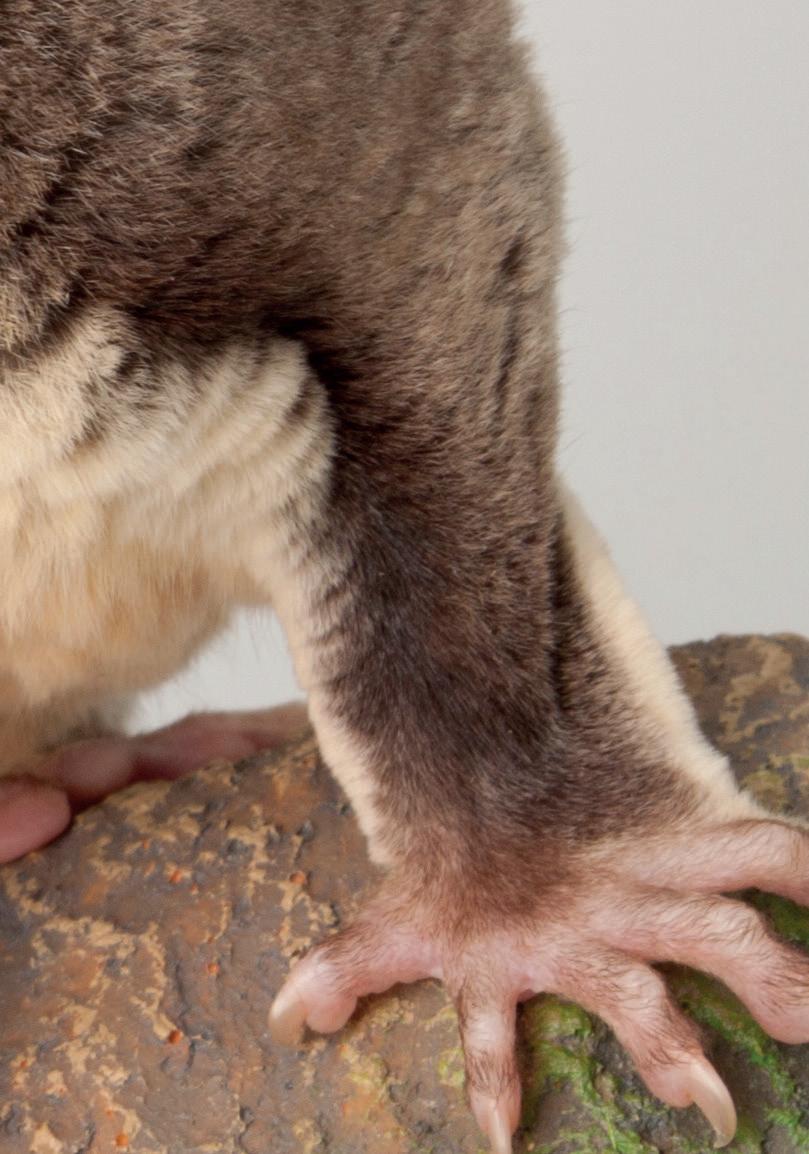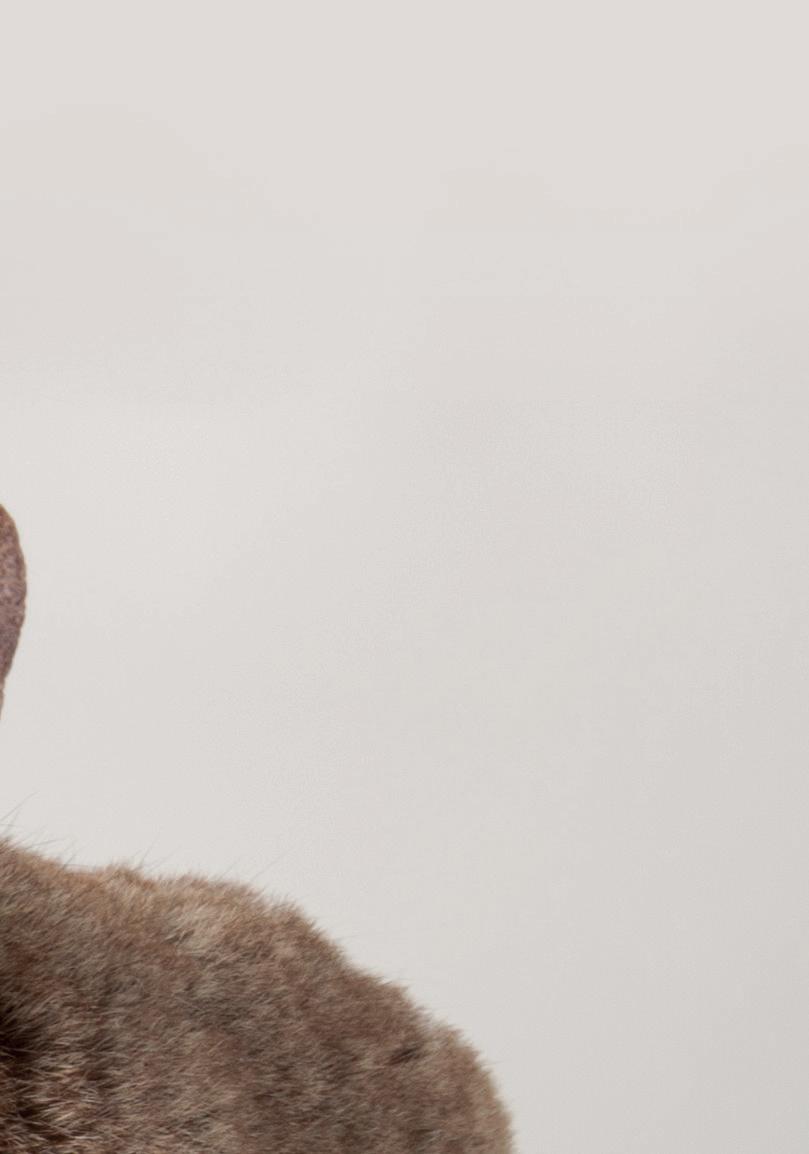
3 minute read
THE ADORABLE SUGAR GLIDER
What’s not to love about these fascinating marsupials? Jim Collins reveals some surprises about sugar gliders and their sometimes not-so-cute habits.
“They only come out at night, they’re extremely messy, and they smell really bad,” explains Jim, when I ask him what it’s like to keep sugar gliders. I laugh, because I know he’s only teasing. Jim has been keeping and breeding these adorable creatures for decades, and there’s no mistaking his fondness for them. However, he’s also very clear that, despite their doe-eyed cuteness, friendly persona and simple husbandry requirements, sugar gliders aren’t for everyone. But let’s start at the beginning…
Advertisement
Wild gliders
Sugar gliders are common in the wild with the International Union for the Conservation of Nature (IUCN) listing them as ‘least concern’. Although split into several different subspecies the validity of these is suspect, with DNA research suggesting that the distinctions between them are but slight.

Translation
The sugar glider’s scientific name, Petaurus breviceps, translates from Latin as ‘short-headed rope-dancer’, no doubt as a reference to their canopy acrobatics.
They are prolific in northern and eastern Australia. They can also be found in New Guinea and a few Indonesian islands, and they were introduced to Tasmania in 1834 soon after a seaport was established. Gliders were brought to the island as pets and inevitably became established there. Unfortunately the species has become a threat to the native Tasmanian swift parrot. The reduced mature forest cover has left the parrots’ nests vulnerable to predation from sugar gliders and it is estimated that the parrot could be extinct in the next decade.
Popular pets
Records show that sugar gliders were being kept as pets as early as the 1830s, but their appearances in Europe were largely restricted to being zoo exhibits until they appeared on the lists of European pet dealers in the late 1980s. Jim was one of the first, if not the first, to bring gliders into the UK, having transported a shipment of 14 gliders from Berlin back in 1994, the founder stock of which came from a continental dealer importing from West Papua, Indonesia. These were closely followed a year later by another 25-strong captive colony from Stuttgart Zoo, which were requiring a new home after the building containing the sugar glider exhibit at the Zoo was demolished.
These two unrelated populations created the foundations of two breeding colonies which still exist today, albeit fortified with specimens from different sources over the forthcoming years. Jim still breeds sugar gliders, maintaining around 30 animals in two separate groups, housed in large aviary type accommodation.
WHY GLIDERS?

I’d seen sugar gliders in zoo exhibits in the early 80s and was fascinated. Even then they struck me as being an ideal candidate for a pet species, given their propensity to form sociable groups. As with most sociable animals, the need to form a bond can become a companionship between the animal and their keeper.
This idea turned out to be fact, evidenced by the many sugar gliders being kept by pet keepers in the USA in the years to come. By the time I had my own colony, keeping gliders as pets was becoming popular all over the world.”
Conventional wisdom
The relatively large colonies which Jim maintains mimics the close social groups seen in glider communities in the wild. To my surprise, Jim explained that his colonies each contain several unneutered males which live happily together – an arrangement that flies in the face of the common consensus which emphatically states that, under no circumstances, should unneutered males be kept together.
“It’s probably true for most people who keep two or three animals as pets in conventional enclosures. I expect smaller enclosures might create increased competition between unneutered males. However, there’s more than one way to keep sugar gliders.



“Zoos have kept big colonies of gliders with unneutered males together for decades and that’s essentially how I keep mine –large colonies in much larger enclosures. We’ve had very few occasions where males have been kicked out of a group, and inter-male aggression is almost unheard of. On the very rare occasions where we have had issues it’s usually a single male which has been excluded from the communal sleeping nest. In these circumstances we simply remove the male to a separate enclosure, pair him up with a female, and rehome the couple to another keeper.
But, as I said, this is such a rare experience that we don’t need to worry much about multiple males being kept together.”
Jim’s enclosures are indeed huge and far larger than the 4 x 2 x 2ft cages or vivariums routinely used by pet keepers. The aviary-style accommodations are more like 14 x 6 x 8ft high, and also, notably, feature multiple nest boxes.
“They’re largely for show, because all of the gliders will inevitably sleep together in the same box,” explains Jim. “If a glider sleeps in a box alone, I know something’s wrong.”
Not From Oz
The sugar gliders we see in the pet trade originate from New Guinea, according to the previously mentioned DNA analyses, which came as a disappointment to those who had accused the trade of importing the species illegally from Australia.
















